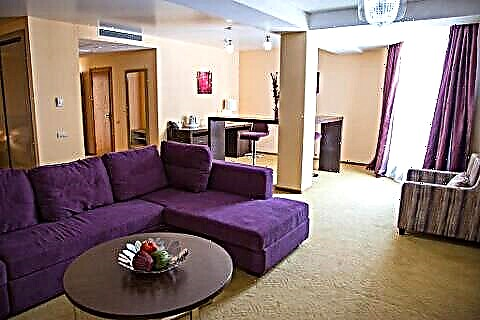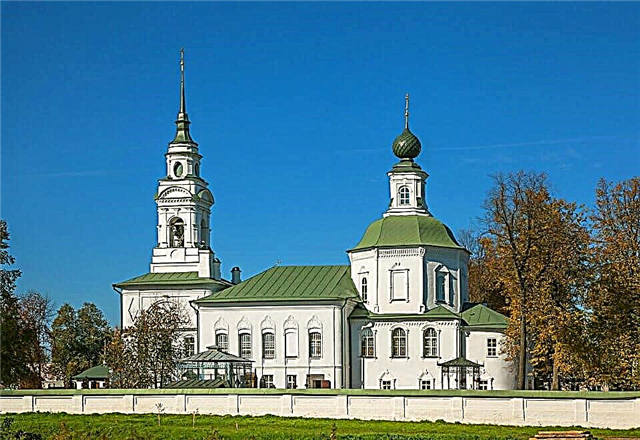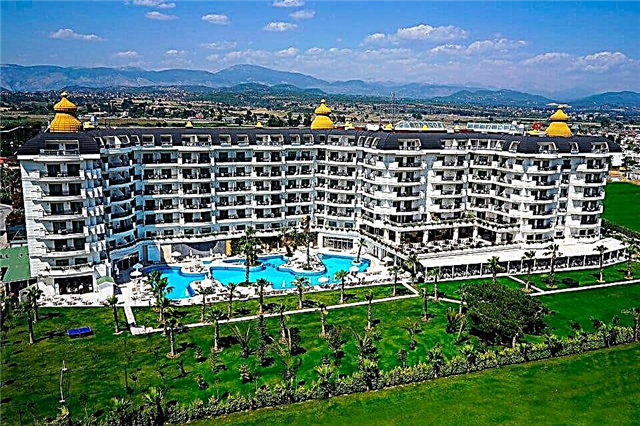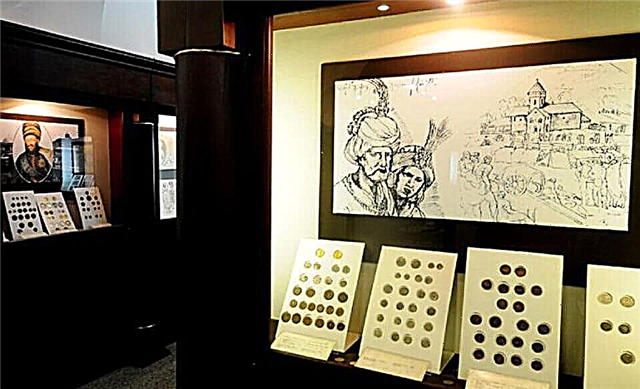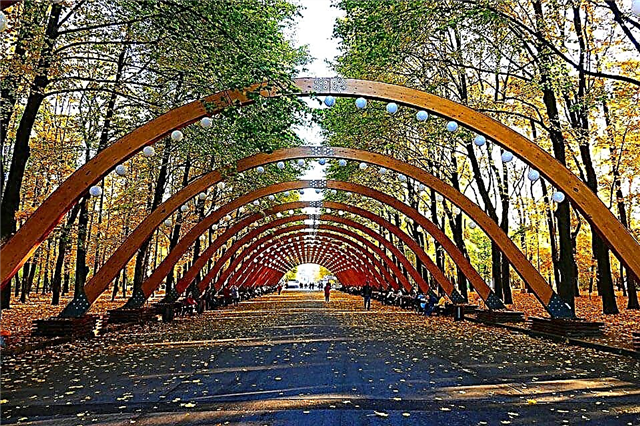Over the centuries, the majestic appearance of the capital of our Motherland has been formed. Outstanding craftsmen created here Cathedrals, Temples, palaces, estates, parks, which have become unique landmarks of the country. Many wall paintings, icons, sculptures, paintings were included in the list of masterpieces of Russian art. Walking around Moscow is pleasant at any time of the year. But in the spring, even the most remote corners come to life and reveal their beauty with renewed vigor. Where to go in Moscow in the spring depends on the length of stay in the city. On May 1, the city's parks begin a new season. Musical, sports, festive events can fill a tourist's entire day. And also museums, art galleries, temples, neighborhoods, mysterious places of the city, covered with legends, familiar from literary works, etc. The article contains one of the routes around the city.
The Red Square
All traditional tourist paths lead to the heart of the capital - to Red Square. The square received this name by decree of the tsar in 1661. And since then, she has become a silent witness to the fateful events in Russia, retaining this role in our time. At the place of execution, terrible royal decrees were voiced, through the ancient Spassky Gate troops of recruits going to war passed. The rulers were also ceremoniously nursed here (now they drive in in modern cars).
The beautiful square is surrounded by architectural monuments created by the country's architects. The domes of the Cathedral of St. Basil the Blessed sparkle above it, the play of the bell ringing sounds. There is Lenin's mausoleum. It became one of the dominant elements of the square and reflects one of the pages of the history of Russia. The look of any tourist will involuntarily stop at a building with a severe black and red facade made of eternal granite. Unusual celebrations and colorfulness await the square this spring. Address: metro station "Alexandrovsky Sad", Red Square.
Alexander Garden
It is recommended to continue walking next to Red Square in the old Alexander Garden. Nearby are the main attractions of the central part of the capital. The garden is considered one of the first gardens in Russia, created for the rest of ordinary people. It appeared in 1819-1822 on the site of the Neglinka River and bastions of the 18th century. These were the years of the reign of Emperor Alexander I.
Until the 1980s, the green area was called Alexander Gardens (Lower, Middle, Upper). The Trinity Bridge (it passed over the Neglinnaya River) is still considered the dividing line of the Upper and Middle Gardens and connects Kutafya and the Trinity Towers of the Kremlin. In the middle of the 16th century, the famous Pharmaceutical Garden was born on the territory of the Sredny Garden. His first fruit trees, plantations with medicinal herbs appeared at the behest of Ivan the Terrible.
The conditional division of the garden is as follows: from the Revolution Square to the Trinity Gate - the Upper Garden. Further to the Borovitsky Gate - Sredny and from them to the Kremlin embankment - the Lower Alexandrovsky Garden. The main attractions of the park are the Tomb of the Unknown Soldier, the restored obelisk in honor of the 300th anniversary of the Romanov dynasty. Ruins grotto, fountains, 200-year-old oak.
Sparrow Hills

A high place on the right bank of the Moskva River, where in ancient times the waters of the Chura, Krovyanka, Kotlovka rivers gurgled. The forests were rustling, healing springs were born from the depths of the earth, it was always attractive for the local population, various conquerors. It was difficult for them to find a better overview of the city and its environs than Vorobyovy Gory.
The name of the beautiful place was given by the name of the village of Vorobyov, located here in the XIV century. The Temple of the Life-Giving Trinity reminds of its existence. The natural wealth of the area determined the appearance here of the famous Rublevsky aqueduct, factories for the production of glass, mirrors, residences of tsars, estates near Moscow, majestic churches, monasteries. Now it offers interesting excursions to the sports complex with a ski jump, the buildings of the Moscow State University and the Academy of Sciences, the main observation deck of the capital. In 2013, the Andreevsky Monastery began work (its history began in 1648).
Mamonov's dacha is still located next to it. Excursion routes of ecological and historical nature run along the paths of the Vorobyovy Gory nature reserve. This is a specially protected area. Three ancient ponds, a unique broad-leaved forest, its fauna and flora have been preserved near the huge city.
Museum-reserve "Tsaritsyno"
The beautiful nature of the Moscow region, the wealth of its rivers, forests of the bowels of the earth attracted residents here. It was enough for Catherine II to drive past the Black Mud estate, and the decision to build a beautiful residence here appeared. The last owners were the princes of Cantemir. It was with them, next to the estate, there was a greenhouse, where rare vegetables and fruits were grown. Since 1775, by order of the Empress, architects Bazhenov and Kazakov created an architectural and landscape ensemble here.
Elizabeth's plans included the construction of 4 palaces. History has changed their implementation, the construction of the Tsaritsyno ensemble dragged on for 200 years. After 1917, the rear was occupied by the services of the Soviet government. In 1960, Tsaritsyno became a district of Moscow. The ensemble received the status of a museum-reserve in 1992. A new stage in Tsaritsyno's life began after restoration work in 2004. The main element of the landscape composition is the Grand Palace (it houses the permanent exhibitions of the museum).
The Bread House (the building of the Second Cavalry Corps) has been completely restored. Above it is visible the monogram "X", "C" (bread and salt). Tower ruin, Small, Middle palaces of the Empress. Various cultural events are held in the palaces, concerts of classical and jazz music are played. The famous Tsaritsyn ponds with dams, piers, a horseshoe-shaped island, where the largest LED fountain was built, have found new life. Bridges over ravines, rivers, delicate arches, sculptures, 14 greenhouses with rare plants are offered to be seen along with an interesting excursion to the popular recreation area of Muscovites.
Patriarch's Ponds

The life of any city continues with the emergence of new architectural ensembles. Among them are tall skyscrapers, houses of complex shapes, fantastic attractions, water parks. For the younger generation, they become common, permanent. But the time will surely come when you want to hide in the green silence, breathe in the atmosphere of the old city, listen to the lurking legends of historical places. Patriarch's Ponds are considered to be one of such zones of the capital.
Not one renovated pond with a skating rink, merry festivities, surrounded by well-groomed alleys, but those three ponds of the Goat Marsh, where in ancient times Patriarch Hermogenes founded the famous Patriarch's Sloboda. Where, after rereading the work "The Master and Margarita", it is easy to imagine a picture when the priests of the ancient cult conduct their rituals on the shore. In reality, there are tricks of evil spirits and confirm the mysticism of the place. The impression is complemented by the preserved names of lanes, houses associated with the great names of artists, poets, writers, scientists of Russia who lived in them.
It seems that Marina Tsvetaeva, who was born here, received her talent, powerful energy thanks to the hidden forces of a special place. In 1976, an amazing monument to Krylov, surrounded by famous heroes from the master's eternal fables, appeared in the favorite recreation area of Muscovites. It's nice to see how old people play chess comfortably, young people frolic on the skating rink, the merriment of fairs is thundering, and the ancient place retains its unusual strength.
Sokolniki Park"

A detailed history of an interesting place in the capital, where an ancient forest raged, an exciting falconry took place, is invited to learn in the Park Museum, opened in 2015. Ivan the Terrible and Tsar Alexei Mikhailovich came here to hunt. At the end of the 17th century, separate groves were formed among the forest: Alekseevskaya, Olenya, Sokolnichya. The young Tsar Peter I organized festivities in the cut-through space called "Maisky Prosek". The alley still exists.
The main fun took place on May 1st. Exhibitions, expositions, lectures of the museum tell about the emergence of the status of a special protected zone (there are three parts of them: reserved, walking, zone of historical objects). After restoration work, 13 reservoirs came to life in the park. This is a cascade of six Putyaevsky ponds, five Olenye, Zolotoy, and Dog pond. They are all designed as excellent seating areas. A special technology is used to grow amazing water lilies that adorn the surface of ponds. The layout of the park was developed by Dolganov in 1937. Many pavilions were built here in 1959 before the international exhibition.
Along with modern buildings, architectural complexes of the Soviet era have been preserved in the park. Unfortunately, the famous labyrinth that existed back in 1950 has not survived. It included walkways along circular alleys shaped like Olympic rings. The park has always been and remains a favorite place for sports and outdoor activities. There is a sports complex "Sokolniki" with popular sections of various martial arts. There is a rental service for any sports equipment, cars, motorcycles. An autodrome, a climbing wall and a go-kart track have been created. The largest tubing slide with year-round coverage is Panda Park Skate Park.
Clean ponds

In an ancient place that has become a prestigious area of the city, you can most often meet representatives of the bohemian crowd of the capital. Cultural and business life is in full swing here around the clock. Political rallies, flash mob-actions, traditional photo exhibitions are held here. In winter, like many years ago, a favorite ice rink spontaneously forms. Many generations of its inhabitants grew up here, skated, made romantic meetings.
Unsolved mysteries, legends have drowned in thickets of weeping willows, "centuries of green dreams" and preserve the special atmosphere of the old city. The history of the name of Chistye Prudy (on the site of the Foul Swamp) remained interesting in a cognitive sense. There are several versions about the life of the place that existed before Belokamennaya Moscow. But in any of them, Alexander Menshikov is called the person who created Chistye Prudy, who ordered to clean the Pogany Ponds at the end of the 17th century. In place of the destroyed walls of the White City during the reign of Catherine II, the first boulevards of the capital appeared (including Chistoprudny Boulevard). Today it is proposed to ride on a special tram with an operating cafe, listen to the history of the region and its attractions.
Among them is the Sovremennik Theater. It is housed in the popular Colosseum cinema. At the very beginning of the boulevard there is a monument to Griboyedov (a meeting place similar to the monument to Pushkin, standing near the former cinema "Russia"). In the central part of the park area there is a new entertainment complex "White Swan". It is pleasant to walk along the shady alleys of Chistye Prudy Park, sit and remember the famous songs performed by Talkov, merrily rush along the skating rink, and take part in traditional folk festivals.
Park "Kolomenskoye"

The flow of tourists and guests of the capital to the most popular park increases with the arrival of spring. Some people rush here to walk around the historical place, look at the monuments of ancient architecture collected from different parts of Russia and restored in the open space of the park. Others - to breathe in the aroma of blooming apple trees in the old Ascension Garden.
Still others walk through the halls of the palace, examine the interior decoration of the churches. A separate group of people rushes for help to the healing spring, which gave birth to the town of Kolomenskoye in the distant XIV century. Manor, park, museum-reserve. According to the surviving drawings, the palace of Alexei Mikhailovich, once called the eighth wonder of the world, has been restored. 270 rooms shine with the outfit of the previous interior and are allowed to be visited with excursion groups.
Before the appearance of elegant chambers, towers, chambers, bizarre galleries of the palace, the Church of the Ascension of the Lord stood here for almost 100 years. The last restoration of the architectural heritage took place in 2007. A carved stone throne has been preserved, and nearby a healing spring still gushes out of the ground, helping women to get rid of infertility. The attractions of the park include: the towers of the Bratsk and Sumy forts from the northern possessions. The palace pavilion of 1825, the house of Peter Alekseevich, the Voznesensky garden with 400-year-old oak trees. There are legends that Tsar Peter I spent his childhood under them.
VDNKh
The city of dreams, the city of the future, as it was imagined in Soviet times, was created to demonstrate the country's achievements in various fields. And there was something to show the whole world (over a 20 year period). The Exhibition of Achievements has become an effective advertisement for the victorious socialist society. Mukhina's sculpture "Worker and Collective Farm Woman" became its symbol.
All republics had specific pavilions on the territory of VDNKh and decorated them with elements of their achievements. The unique ensemble consists of 49 architectural buildings included in the lists of cultural heritage. New pavilions dedicated to cybernetics, cosmonautics and astronomy gradually appeared. Only here it is proposed to see a copy of Gagarin's spacecraft, the first aircraft for passengers. Now VDNKh is considered an entertainment and educational ensemble of Russia.
Renovated pavilions, well-groomed alleys, fountains, recreation areas in green park areas attract residents and guests here. Permanent exhibitions introduce visitors to the best products from various industries. Interesting music concerts, festivals, fairs, sports events take place on the territory of VDNKh on a regular basis.
Catherine park

The ancient place of the city has not yet been brought into full order in accordance with modern possibilities. But this did not make it worse and did not lose its popularity among people who love silence, peace, and beautiful nature. There is no Internet access here, attractions are not noisy, but lilac, cherry, apple bushes bloom in the spring. Bushes of wild rose, roses, autumn chrysanthemums continue the extraordinary flower parade. The age-old oaks and three-hundred-year-old willows are rustling. The first alleys of the park appeared on the territory of the country estate of Count Saltykov.
Later it housed the Catherine Institute for Noble Maidens. This is where the name of the park comes from. Ponds are considered the heart of the old park. Despite the fact that they have long been hidden in the pipes of the Naprudnaya and Neglinka rivers, their underground currents and ponds retain the breath of the earth and create a favorable atmosphere for a calm rest. In summer, it is suggested to go boating, sit in the cozy Prichal cafe, see the chapel built in the spirit of the Baroque Elizabethan period of the 18th century, the memorial complex erected in honor of Suvorov. Nearby is the stadium "Olympic", built in 1979.
Poklonnaya Gora and Victory Park

World War II took place in many cities of Russia as a terrible hurricane. The victory in it went to hard battles with heavy losses. In memory of the exploits of the living and deceased heroes, the largest (in the world) memorial ensemble was created on the Poklonnaya Hill of the capital. The place was not chosen by chance: conquerors who dreamed of capturing the city stopped on the ancient hill. Here, many defenders of their native land took their last battle.
In 1958, the idea of creating a Victory Park, a Museum of the Great Patriotic War, was born.Symbolically, a bayonet with a height equal to the number of war days and the figure of the goddess Nike is installed in front of the arched structure. On the territory of the complex there are the Church of St. George the Victorious, the Synagogue, the Mosque, the Holocaust Museum, and monuments to the soldiers of the internationalists. Every evening, the red illumination of 225 fountains (according to the number of weeks in the war) of the "Years of War" complex comes on. On Poklonnaya Hill, solemn events dedicated to the great victory are held.
Boring Garden

The largest landscape park in the center (on the right bank of the river) appeared on the site of the old noble estate Neskuchnoye, which had existed here since 1728. The owner held lavish celebrations in the estate, ennobled the territory. Later the noble families of Trubetskoy, Orlov, Golitsyn, landowner Demidov settled here. Since 1843, the entire territory was bought by the royal family.
At this stage, Neskuchny Garden becomes the center of the city's secular entertainment. In 1928 it became part of the Gorky Park territory. The Green Theater for 20 thousand seats was built there. During the Soviet period, it was the venue for the main events of the Central Park of Culture and Leisure. The park's attractions include the Orlovs' summer house. Rotunda of the 18th century or the Hunting Lodge, where the filming of the program “What? Where? When?".
Alexandria Palace, Museum of Minerals, fountains, stone bridges over deep ravines. Sports and theater events are regularly held here. There is a mini zoo and a kids' club for young visitors. The rental service offers to rent rollers, bicycles. You can evaluate the dexterity of physical training in the rope park. Take a walk among the picturesque places on the banks of the river in the center of the metropolis.
Hermitage Garden

The Hermitage recreation area has been considered the center of summer theater life for the second century. On a small territory there are theaters "Sphere", "Hermitage", "New Life", "SUMMER TIMES". The latter has a peculiarity: it is silent, all actions are broadcast through headphones. Spectators sit on bright cushions scattered across the clearing, where the ice rink is flooded in winter. Scenes, alleys, pavilions of the old park remember the performances of Nezhdanova, Chaliapin, Sarah Bernhardt, Yermolova, etc. The famous Moscow Art Theater was opened on its territory in 1898.
He began his work with the play "Tsar Fyodor Ivanovich" and Chekhov's plays. The garden is often called Shchukinsky after the theatrical patron YV Shchukin (the founder of the Hermitage theater). Thanks to the efforts of this man, the abandoned area of the Vorontsov estate has turned into a favorite recreation area of the city's bohemians with numerous pavilions and pop stages. There are many interesting sculptures and monuments in the garden. In 2006, the "Monument to All Lovers" appeared in the form of a large Silver Heart. Inside there are bells tinkling in the wind. Many buildings in the garden have been restored to celebrate the 850th anniversary of the city.
Frunzenskaya embankment

Not far from Gorky Park and Neskuchny Garden is one of the most beautiful embankments. It is laid along the left bank of the river and stretches from the Crimean bridge to the Khamovnichesky shaft. Until the 30s of the last century, it was called Khamovnicheskaya embankment. For 2.5 km, the river bank is "guarded" by residential buildings with pompous entrances, quaint turrets, built of yellow brick in the style of "Stalin's classicism".
The area was considered prestigious and important persons of that time lived here (often they were related to the Kremlin). House No. 50 is sometimes called "the house of the deposed leaders." In the last century, the embankment was expanded and new gigantic buildings were erected. Among them is the building of the headquarters of the ground forces of Russia. Local legends go about its underground communications.
Izmailovsky Park

It’s hard to believe that impenetrable forests, bears and other animals roamed on the territory of one of the largest parks in the city. The passion of Tsar Alexei Mikhailovich Quiet (XVII century) for hunting gave life to the Izmailovo estate, from which the development of wild territory began. Here appeared "Marvelous Gardens", decorative elements in the form of towers, chambers, a menagerie (it was considered the largest in Europe at that time). Lions, tigers, lynxes, monkeys, rare species of birds walked freely on its territory.
In 1930, the Soviet government decided to create the Izmailovsky recreation park for Muscovites. Until 1961, it was named after Stalin. Now the natural-historical ensemble includes the forest parks of Terletsky, Izmailovsky, Serebryano-Vinogradny pond (together with the Izmailovo estate), old birch groves, and numerous monuments. There are many recreation areas and attractions for children in the park. These are "Tiny", "Fun", 5D cinema, two Ferris wheels (for children and adults).
There are many comfortable sports grounds in the park; there is a cafe "Lesnoye". On a large area within the city, the natural flora and fauna, clean air have been preserved. The park is called the cleanest recreation area in Europe.
Arkhangelskoye Estate

Not far from the city of Krasnogorsk, 20 km from Moscow, there is an old estate (formerly called Upolozy), which can be called an example of the cultural life of the times of Ivan the Terrible. The owner of the village was the Kireevsky brothers, and then F. Sheremetev. The Yusupovs became the last owners of the estate. The favorable location of the Yusupov buildings made the place the center of public life.
The emperors of the 19th century, Pushkin, Herzen, Serov, Benois, Korovin, came to the estate several times. Collections of paintings, sculptures, expensive jewelry, architectural elements were constantly replenished. The manor park has become a model for landscape proposals. Rare plants grew in the greenhouses, striking the beauty of the guests. Llamas, camels, pheasants calmly walked through the territories of the enclosures. In 1919, a museum began to work on the estate. It includes a palace, a park, a village, a church.
Visitors can view individual rooms of the Palace. The main expositions are located in the Office Wing. During the excursions it is proposed to learn the history of the estate and its rich collections. See the temple-burial vault "Colonnade", "Theater of Grozny", "Tea House", Temple of the Archangel Michael, Small Palace.
Park "Serebryany Bor"

Since ancient times, Muscovites have known a forest with extraordinary silver pines (they sparkled with silver in the first rays of the sun), bordering the road to Zvenigorod. People came here for mushrooms, berries, for picnics. The Khoroshevsky forest park is now considered a paradise for residents of the metropolis. After the construction of the canal, the creation of the water surface of the Bottomless Pond, Sosnovy Bor became a beach area for lazy and active summer recreation. The forest is adjacent to the Moskva River.

Now beaches with the necessary infrastructure are equipped here, children's and sports grounds have been created. It is pleasant to walk along the shady alleys of century-old pine trees, breathe silence. The route of the ecological trail with aviaries in which birds live has been laid. From the ornithological tower, you can see the surrounding marshes, creating unusually clean air. Near the beach number 2 there is an oak tree, under which Lemeshev rested, a park of Veterans is equipped. Serebryany Bor has become an island with a pier, rowing bases, which makes it even more attractive for recreation.
Observation deck Panorama 360

Not so long ago, the first visitors saw the city from the height of the new observation deck. She appeared on the 89th floor of the Federation skyscraper. The view is 360 °, comfortable, safe performance allows you to take high-quality pictures. At night, a modern telescope makes it possible to enjoy the sky, the stars from an open area. On the territory, fenced with panoramic windows, there are 9 interactive zones, restaurants, and a 3D cinema.
There are premises for master classes, exhibitions, schools for the study of the history of the capital. Children under 7 years old are not allowed to the open area located on the roof of the tower. But they can taste delicious chocolate produced here in two special factories (the highest in the world). Excursions to the observation deck take place every hour.The ascent to the 89th floor is carried out using four modern high-speed elevators. After 22 hours, you can use them without a guide. PANORAMA 360 is considered the highest observation deck in Europe.
Arbat

The pedestrian Arbat begins near the Arbatskaya and Smolenskaya metro stations. Every guest of the capital aspires here to plunge into the world of past centuries for a short walk, the historical spirit of the city, filled with the sounds of the famous songs of Okudzhava, to pass next to the wall of memory of Viktor Tsoi. Small alleys, quiet little courtyards evoke a special state of mind, memories of many famous personalities who worked in these places.
The memory of them is forever frozen in the buildings surrounding the Arbat. For example, house number 4 takes us back to the time of the life of Pushkin's muse Natalia Goncharova. The first information about the street has been known since 1493. The road to Smolensk went along it. Buildings in the "Empire" style on the Arbat appeared in the 20th century. Instead of wealthy merchants, musicians, artists, poets, and people of art settled here. It houses the Vakhtangov Theater. Now Arbat is considered an open-air museum with restaurants, markets, fashion shops, and places of art exhibitions.
Botanical Garden of Moscow State University "Pharmaceutical Garden"

Near the busy Mira Avenue, there is an amazing green corner, created in 1706 by the efforts of Peter I. According to legend, the larch planted by him is still growing. Initially, the idea was to create plantations of medicinal herbs (Aptekarskiy Ogorod). It has been preserved as an invaluable living archive of plants collected from different parts of the planet and used to preserve human health. Well-groomed flower plantations and greenhouses with rare tropical species were gradually formed.
For over 300 years they have been growing, adapting to the local climate and becoming a unique base for students of Moscow State University. Even the well-known lilac has 130 flowering varieties. Thousands of varieties of orchids, 700 varieties of irises, 5000 botanical taxa fill the open and closed space of the Botanical Garden. It is interesting to see the exposition of plants from the Red Book. You are invited to see them at any time. The botanical garden is open to everyone and is considered a popular recreation place for the townspeople.

